Walking a mile in the shoes of refugees on Independence Mall
Listen 10:14-
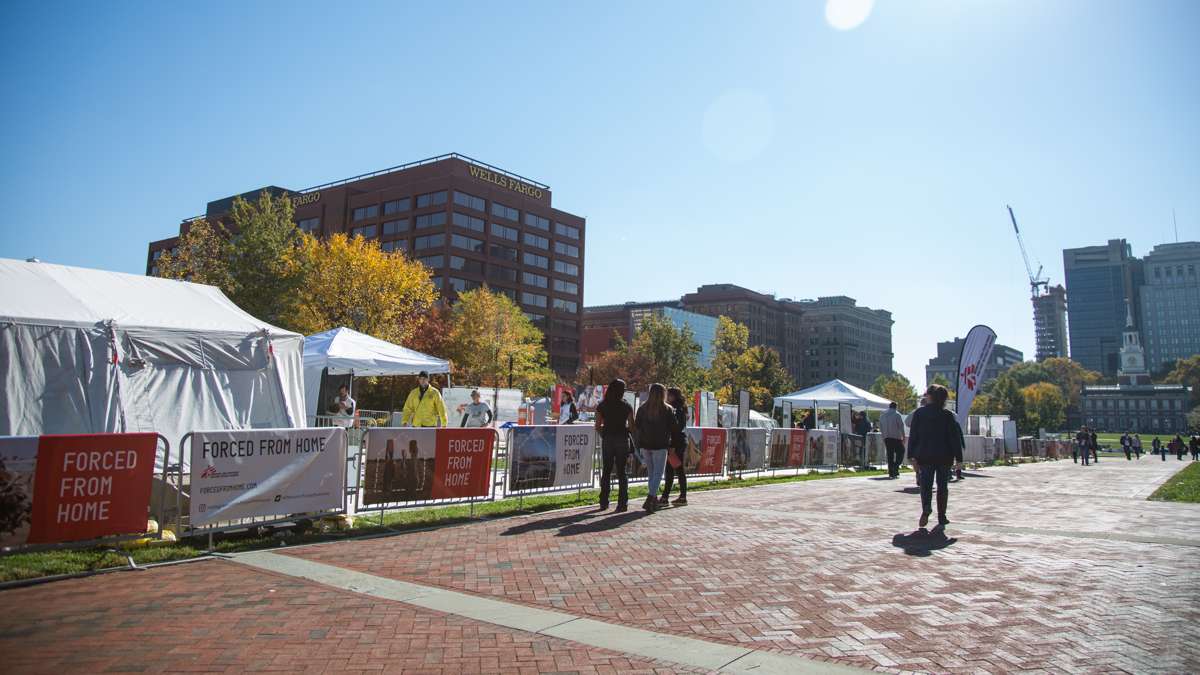
A free, interactive, traveling exhibit presented by Doctors Without Borders about the migrantion crisis worldwide is open on Independence Mall November 5 to13. (Emily Cohen for NewsWorks)
-

The first stop in the journey is 'push factors' showing the issues that cause people to flee their homes. Visitors are given 30 seconds to grab five items from the wall before they continue their jouney through the exhibit which is open on Independence Mall November 5 to 13. (Emily Cohen for NewsWorks)
-
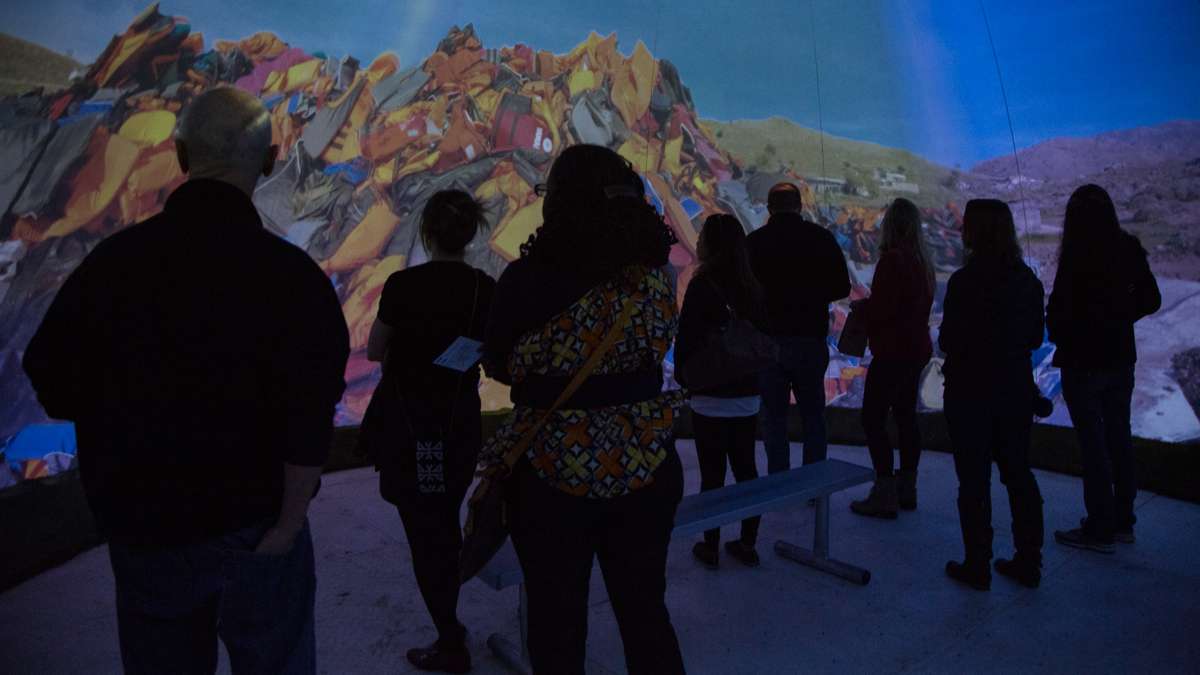
Patrons enter a dome for a 360-degree video experience which introduces them to the journeys of migrants worldwide. (Emily Cohen for NewsWorks)
-
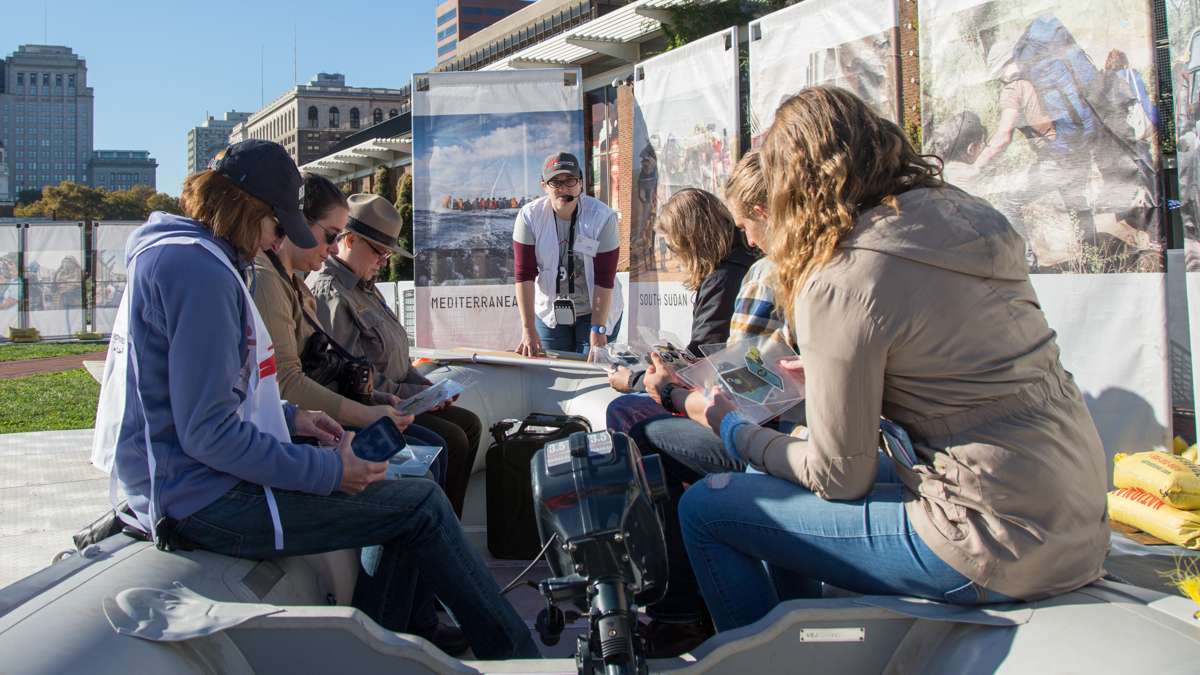
Visitors take a step-by-step journey as they imagine what life is like for the more than 65 million forcibly displaced persons worldwide. The exhibit is open on Independence Mall November 5 to 13. (Emily Cohen for NewsWorks)
-
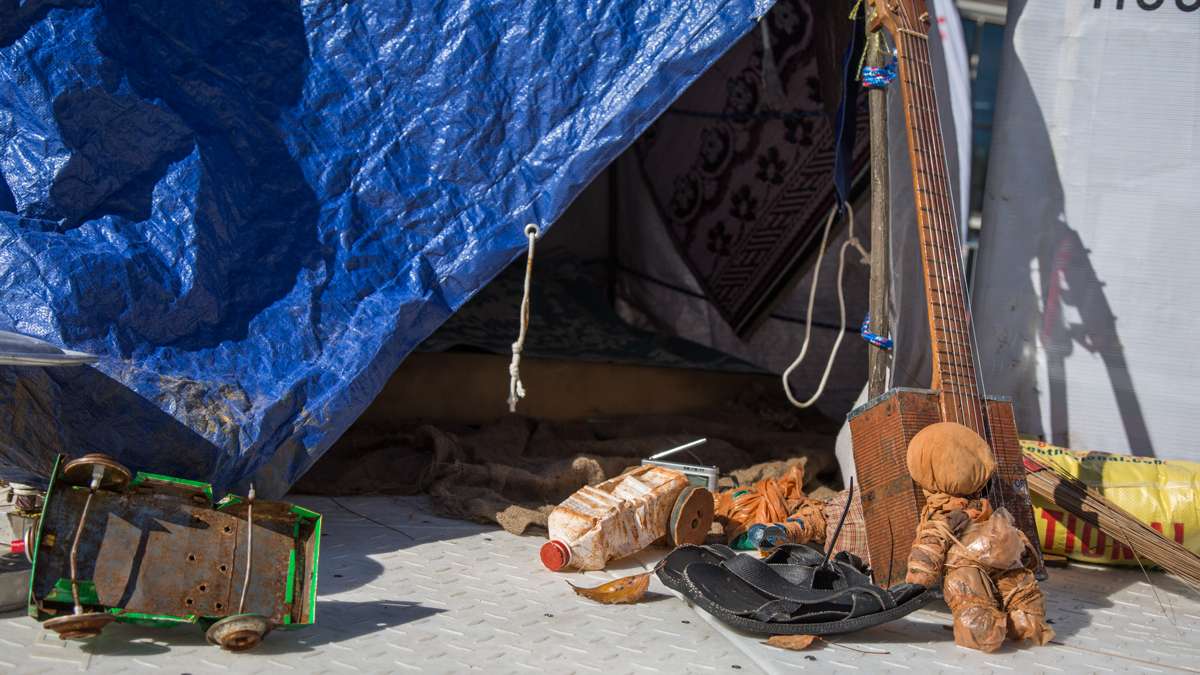
A makeshift tent contains a migrant family's few possessions. (Emily Cohen for NewsWorks)
-
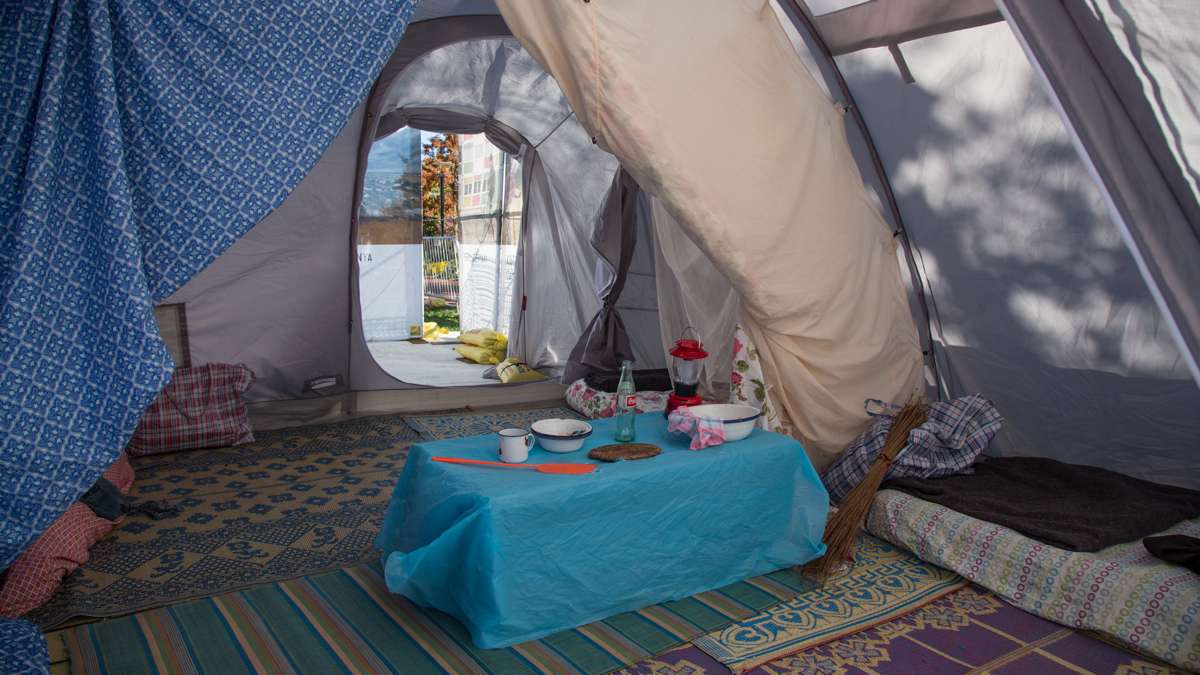
When migrants make it to refugee camps they are often placed with other families in large tents or makeshift homes. Spaces are tight and cultural traditions must be respected making the process even more tolling on the migrants. (Emily Cohen for NewsWorks)
-
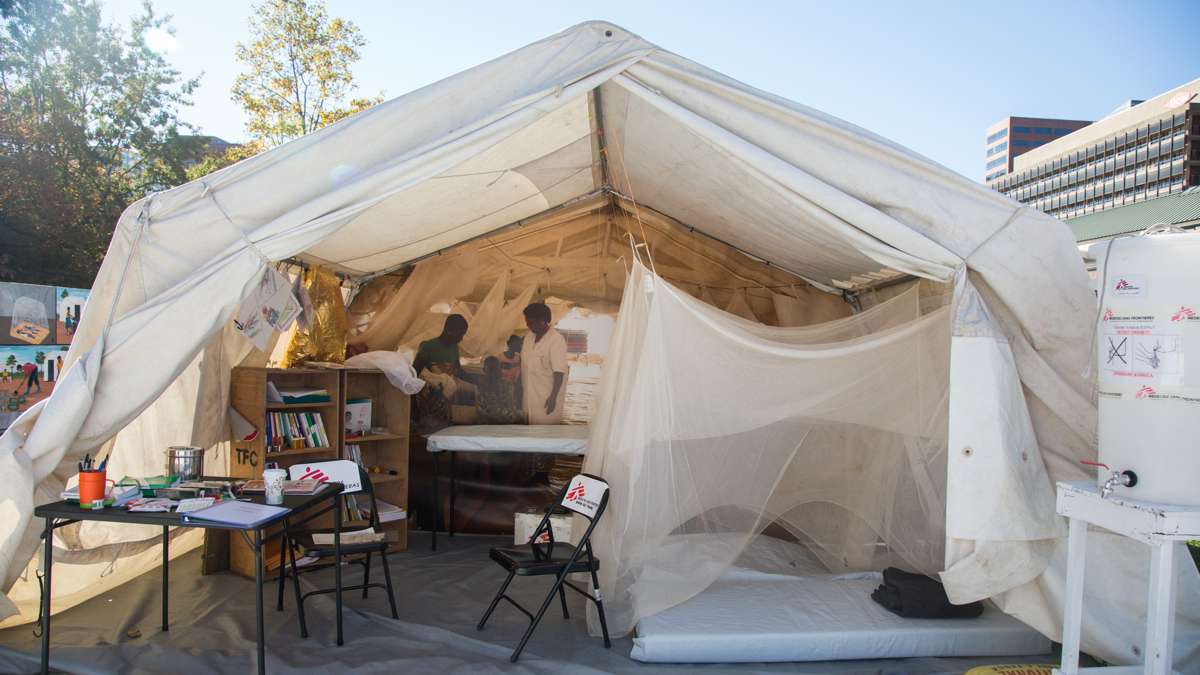
Médecins Sans Frontières, the French name for Doctors Without Borders, is an international medical humanitarian organization that brings aid to people affected by armed conflict, epidemics, natural disasters, and exclusion from healtcare in 70 countries worldwide. (Emily Cohen for NewsWorks)
-
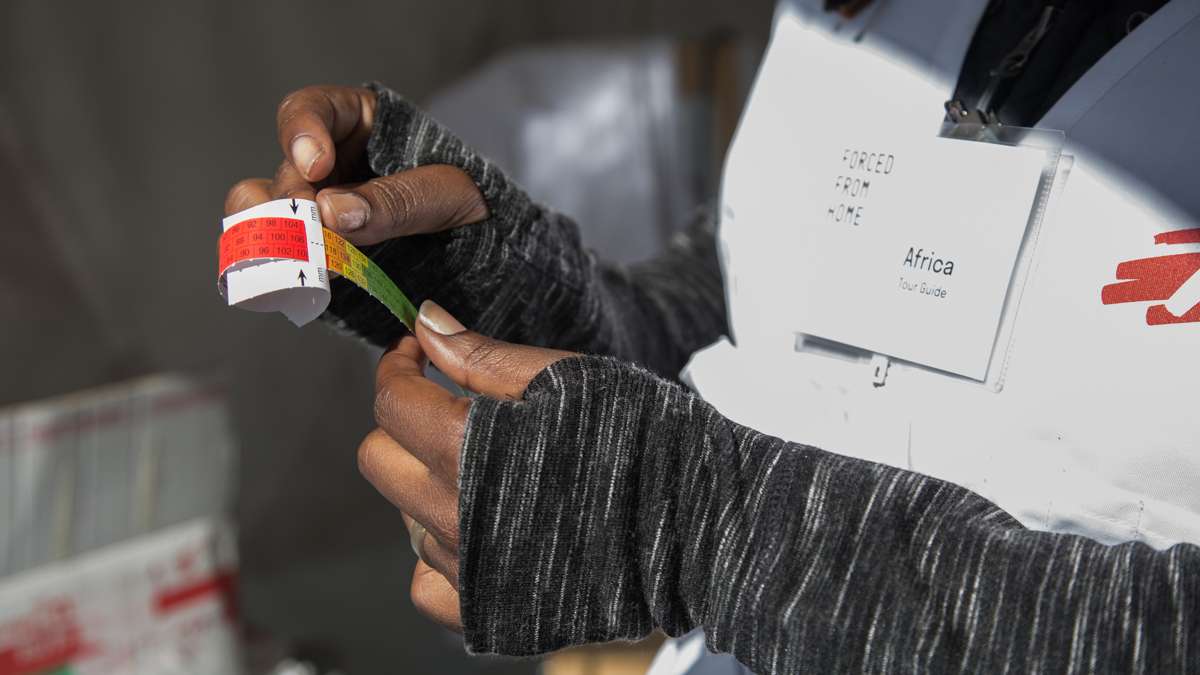
Dr. Africa Stewart shows how to use a MUAC tool, middle upper arm circumference, which is used for determining malnutrition in children who reach MSF aid encampments. (Emily Cohen for NewsWorks)
-
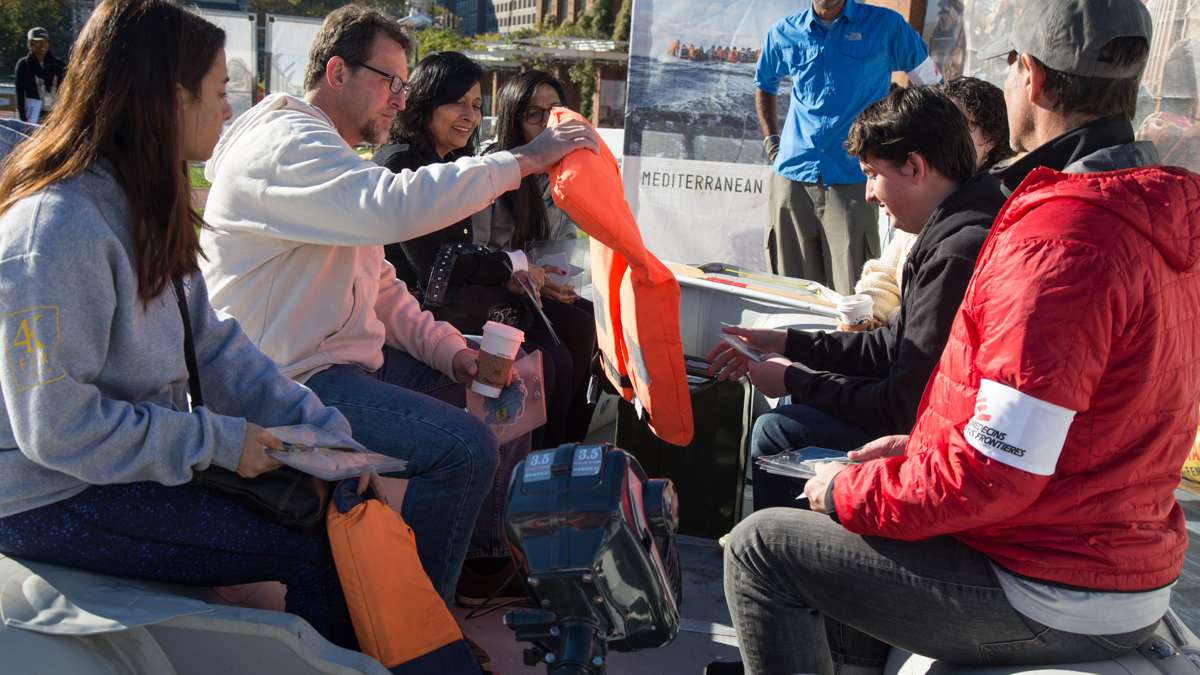
Dr. Africa Stewart shows how to use a MUAC tool, middle upper arm circumference, which is used for determining malnutrition in children who reach MSF aid encampments. (Emily Cohen for NewsWorks)
-
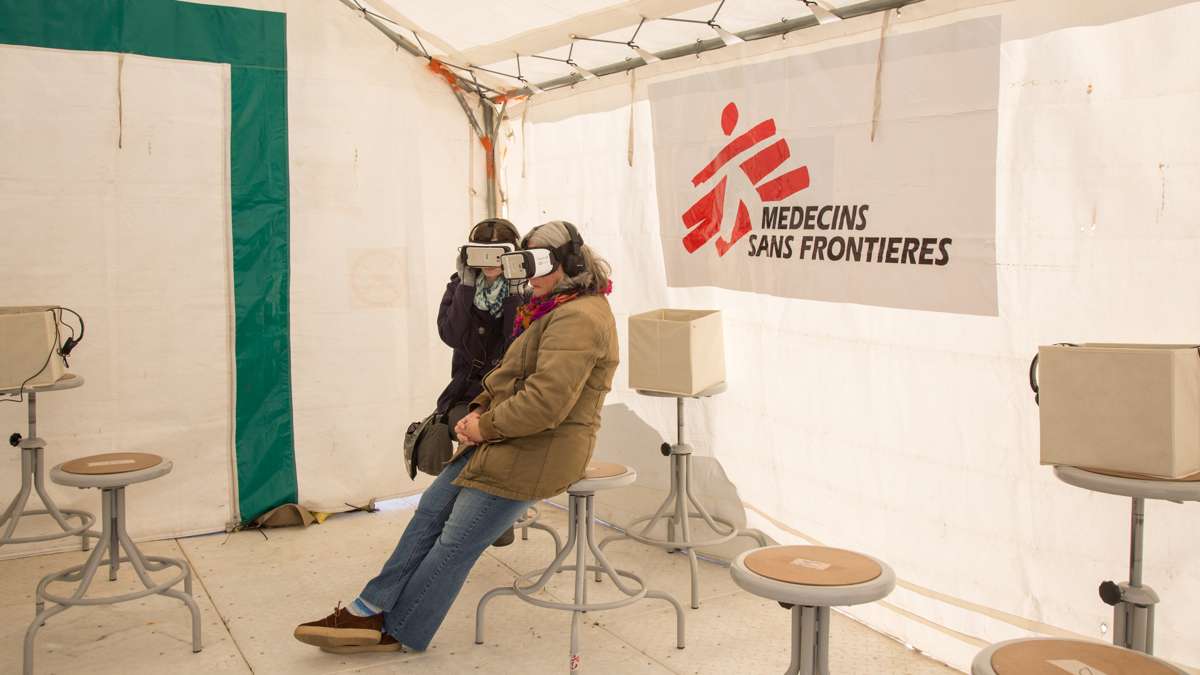
Using new technology to reach a greater audience, MSF created three Virtual Reality video experiences telling the stories of displaced individuals from camps in Iraq, Mexico, and Tanzania. (Emily Cohen for NewsWorks)
-
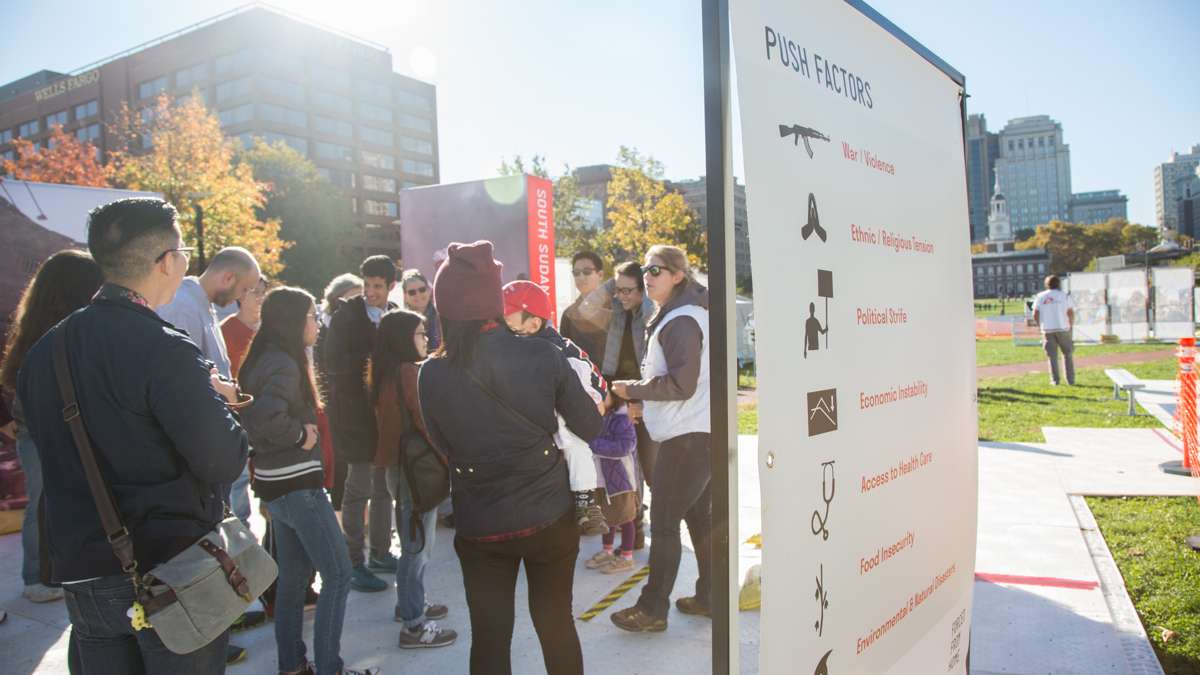
An aid worker discusses different push factors that would cause someone to make the decsion to leave their homes. (Emily Cohen for NewsWorks)
-
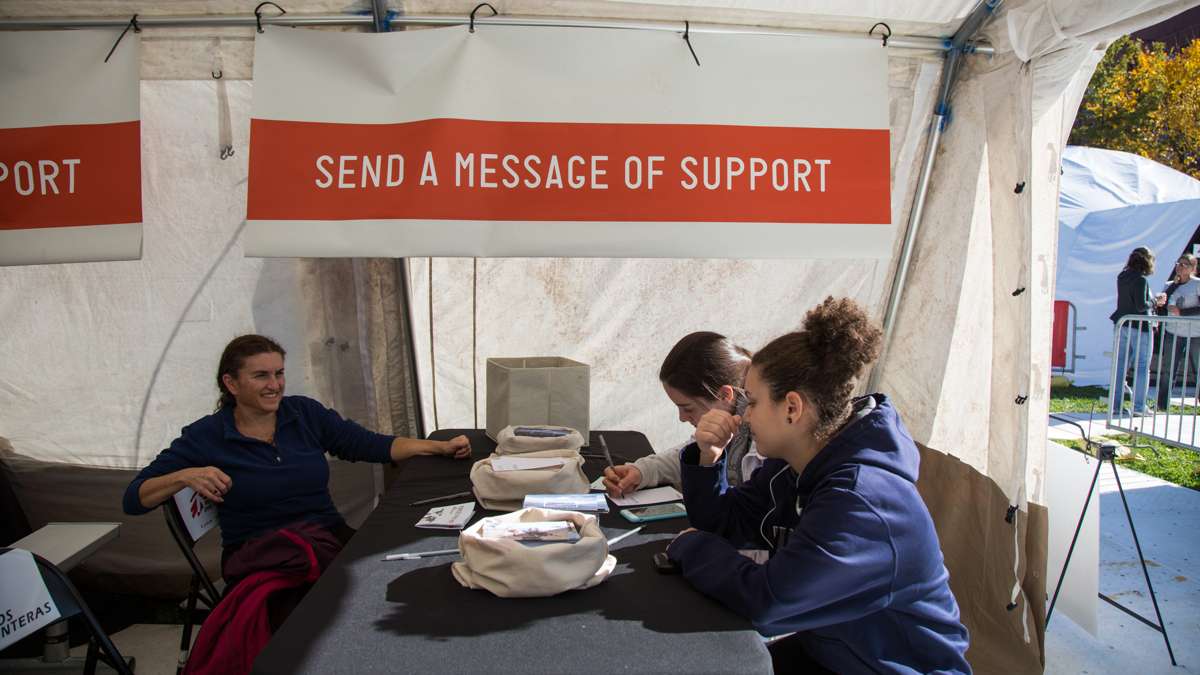
The last stop in the exhbit gives visitors a chance to write letters to MSF aid workers, sometimes something as simple as a joke or a thank you can lift the spirits of aid workers who are away from their families for months at a time. (Emily Cohen for NewsWorks)
A collection of tents occupying Independence Mall this week takes visitors through a step-by-step re-creation of the struggle faced by 65 million people who have been forced from their homes worldwide.
“We’re here to humanize a crisis that has been politicized,” said Jason Cone, the executive director of Médecins Sans Frontières America, at the official opening of the Philadelphia stop of “Forced From Home.”
The traveling exhibit takes visitors through a step-by-step simulation of the struggles of 65 million people who have been forced from their homes worldwide.
With the height of the migrant crisis happening and growing anti-immigration rhetoric coming from politicians worldwide, MSF — also known as Doctors Without Borders — created an interactive exhibit highlighting the obstacles people face on their quest for a safer life.
“No one wants to uproot their family and take them on perilous journeys across thousands of miles of land and sea,”‘ said Dr. Africa Stewart, who leads the tour through the exhibit. “These are last-ditch efforts for a better and safer future.
“I have to worry about if my child is in the right car seat, not about where to bury my children,” Stewart said, as she recounted her experiences as an aid worker in South Sudan and elsewhere in the world.
Each tour is led by a MSF aid worker; some are medical professionals and others are logistics professionals.
The first stop on the journey through the exhibit outlines the “push factors” of displacement, what makes someone leave their home, whether it be war or political or environmentally related.
Before they begin their journey, patrons are given 30 seconds to grab five items from a peg board, things such as passports, cell phones, jewelry, medicine, photographs. Many families flee in the middle of the night, often leaving behind elders who attempt to make it look like nothing has changed at home to give the rest of the family an opportunity to escape with only what they can carry.
The journey continues as the guide illustrates the dangers of the actual transit from place to place and the obstacles they face when they arrive at internment centers before they can move on to refugee or internally displaced camps.
Once in the camps, the displaced can finally receive medical care and mental health support, which is provided by MSF in the 70 countries where it operates.
“But all of our programs are not enough to counter brutal policies that severely limit access to assistance,” MSF director Jason Cone said. “[We are] witnessing the outright denial of humanitarian aid to people in conflict zones … refugees face restricted access to lifesaving assistance or are forcibly returned to conflict zones.”
The exhibit aims to bring the abstract association Americanse have with migration to a more enhanced understanding of the choices made by those who take the perilous journey to a better future for them and their family.
The exhibit runs on Independence Mall through Sunday from 9 a.m. to 3:30 p.m.
WHYY is your source for fact-based, in-depth journalism and information. As a nonprofit organization, we rely on financial support from readers like you. Please give today.


